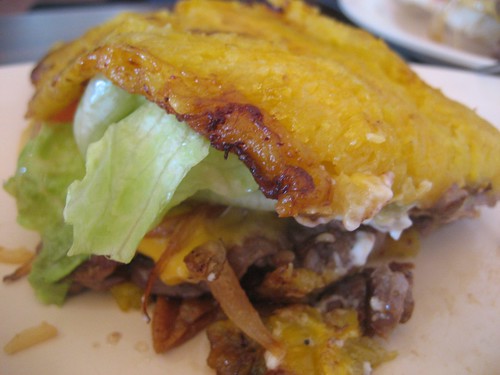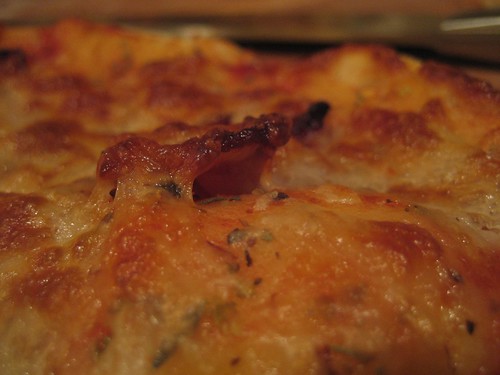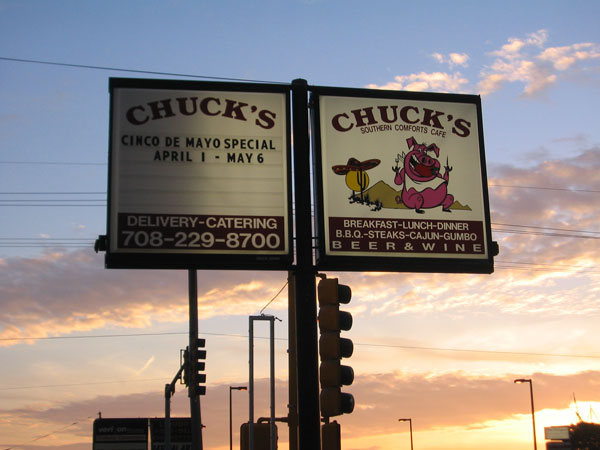I have seen the future, and it works from home.
Or at least from a cute little sandwich shop in Roscoe Village.
So I read there was this new Hawaiian cafe in my neighborhood, Roscoe Village. Hawaiian? I realize that the stereotype, that the main ethnic type in Roscoe Village is Strollermom-American, is well founded, but there’s a reason nearly all the Turkish restaurants in town are within walking distance of me, too, to name one other socio-ethnic group, and so I guess I thought it was possible that there were Hawaiians with a hitherto unsuspected desire for Spam musabi in the vicinity. So I walked up, and saw the day’s special:
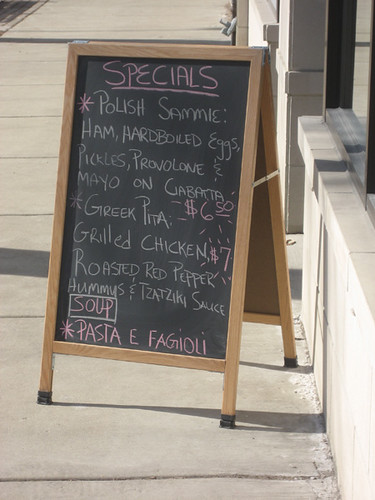
Uh, yeah, Hawaiian. Turns out the name was just chosen for its new-agey visualize-your-inner-beach qualities, and otherwise, this is a sandwich shop targeting, yes, Stroller Mom America. It’s attractive, it’s low-key (so no death metal will come on the iPod and wake Baby), the stuff is tame and fairly fresh… and the meats are all, Proudly, from Boar’s Head. Which is when I realized another thing: someone had posted something on LTHForum about a place in my hood selling charcuterie, which had picked up a fryer on the cheap from the late Kaze down the street. And this was it. At that moment, my visions of a Salumi-level charcuterie mecca disappeared down a Boar’s Head’s gullet; it’s not that Boar’s Head is bad, exactly, it’s a supermarket brand and it’s one of the better ones, but all that means is, it’s processed to still resemble what it came from, it’s not totally fakey. But it’s not fresh-roasted turkey from Paulina, either, and there are places, like Wicker Park’s Birchwood Kitchen, that don’t just settle for the obvious marketing support you get if you commit to a full Boar’s Head program, but insist on real, fresh (or in the case of La Quercia, cured) food. And I didn’t just get one of those two minutes from my house.
That said, nothing says you have to eat the things that use Boar’s Head meat-like meat™, and so looking around the menu of fairly light, very white food, I spotted a chicken salad sandwich. It had asparagus spears in it, which was a nice touch. It had a lot of lettuce and mayo mixed in, it was clean-tasting rather than especially interesting, if not for the asparagus and the rosemary bread it would have been bland, but (this is the dirty secret of my life as a food explorer) there are plenty of days when I just have to grab something on my street, none of which is going to lead to shouting great discoveries from the rooftops. So I will be happy just to have this place making fresh, decent food within walking distance.
In any case, what interested me most about this place, as I sat there, wasn’t the food. Like a lot of people, I think my reaction to Apple’s announcement of the iPad last week was somewhat contradictory: on the one hand, it seems a bit underwhelming, but on the other… I can’t help but feel, and hope, that this oversized iPod Touch is an important first step toward whatever the next thing computing will be is. It’s a little glimpse of the future, even if it doesn’t quite do much that’s new yet.
Across from me there was a large table. Two women sat there, with laptops, working. Next to them was a kid’s table. Sunlight streamed in the window. Soft music played overhead. They nibbled at their food. We imagine that the future will be shiny, metallic, vaguely fascist in a nice way. We imagine a future in which all of life is sort of like the Air Force Academy, basically, modernist and hyperorganized:
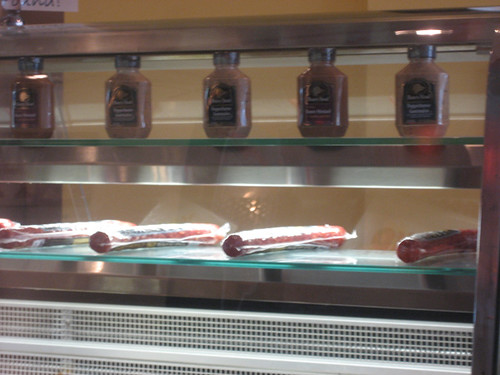
But in reality, this is the future for which Steve Jobs is creating the iPad, and it’s already here: Mom sitting at a table, doing her work while somebody else is making her lunch, just as when she was a kid herself, and drew at a table while her mom made her lunch. Or maybe she wasn’t drawing; maybe she was using an Etch-a-Sketch.

Aloha, 21st century.
Nohea Cafe
2142 W. Roscoe
(773) 935-7448
noheacafe.com


 Posted in
Posted in 
